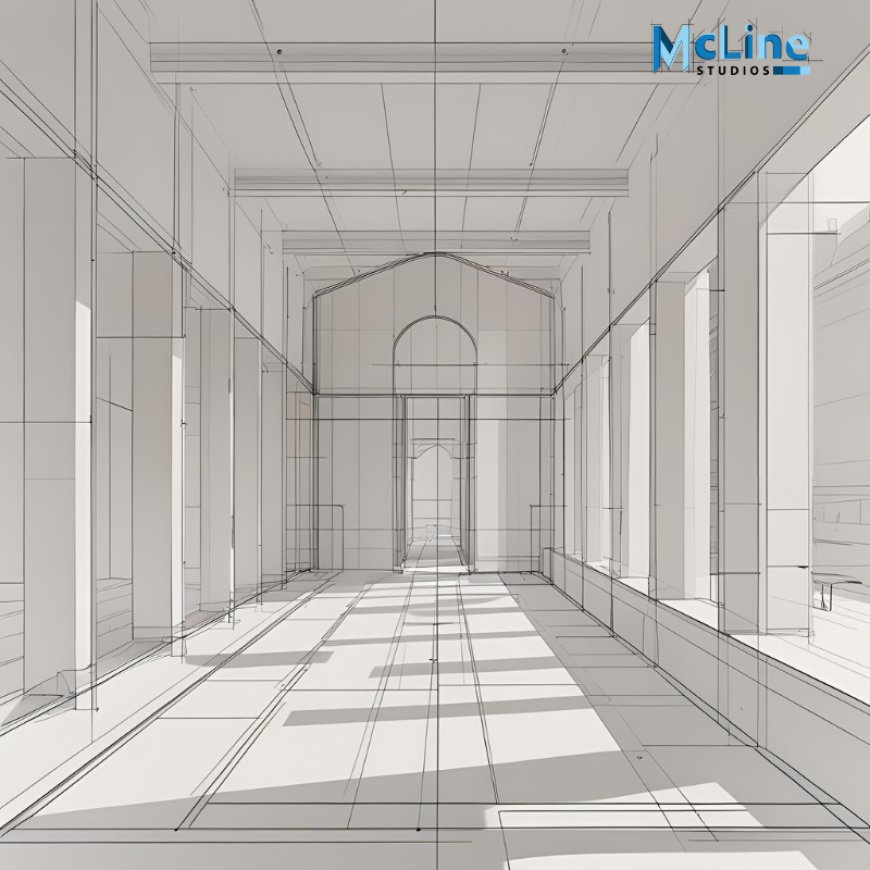Architectural Drafting Mistakes That Can Derail Your Project
Accurate architectural drafting is the foundation of any successful construction project. It is the process of creating clear and detailed drawings that show how a building should be built.

In architecture, even the smallest oversight in a drafting plan can have a ripple effect, leading to costly delays, miscommunication, and structural issues. Architectural drafting is more than just putting lines on paperits the foundation upon which successful buildings are constructed.
Whether its a residential home or a commercial complex, the accuracy and clarity of drafts directly influence the outcome of a project.
Unfortunately, common drafting mistakes like incorrect dimensions, unclear annotations, or missing details can cause significant setbacks during construction.
In this blog, well explore the most frequent architectural drafting mistakes and explain how avoiding them can keep your project on track, on budget, and built exactly as envisioned.
The Importance of Accurate Architectural Drafting
Accurate architectural drafting is the foundation of any successful construction project. It is the process of creating clear and detailed drawings that show how a building should be built. These drawings include important information such as dimensions, materials, floor plans, and structural details.
When drafts are accurate, everyone involved in the projectarchitects, engineers, contractors, and builderscan understand the design clearly. This reduces confusion and helps avoid mistakes during construction. For example, if a wall is drawn with the wrong measurements, it can lead to problems with fitting doors, windows, or other parts. Fixing these mistakes later can cost both time and money.
Good drafting also helps with getting the right permits and approvals. Authorities often require precise drawings to check if the building follows safety rules and local codes. Accurate plans also make it easier to estimate costs and order the correct amount of materials, which helps reduce waste.
In short, accurate architectural drafting saves time, reduces errors, and improves communication between everyone working on the project. It ensures the design vision becomes a reality, just as planned. Whether it's a small house or a big commercial building, precise drafts are key to making sure the final structure is safe, functional, and beautiful.
Common Architectural Drafting Mistakes
Architectural drafting is an important step in building design. It guides how a building will be made. But sometimes, mistakes in drafting can lead to big problems during construction. Here are some common drafting mistakes to avoid.
One major mistake is wrong measurements. If the dimensions in the drawing are not correct, walls, windows, or doors may not fit properly. This can cause delays and cost more money to fix.
Another common error is missing details. Sometimes important information, like material types, door sizes, or ceiling heights, is not included. Without these details, builders might guess or make wrong choices, leading to poor results.
Poor labeling is also a big issue. If labels for rooms, sections, or materials are unclear or missing, it can be confusing. Workers may not understand the plan, which can lead to mistakes on-site.
Lack of coordination between drawings is another problem. For example, the floor plan may not match the elevation or section views. These mismatches confuse contractors and can slow down the work.
Also, ignoring building codes is a serious mistake. Drafting should follow local rules for safety, design, and structure. If not, the project may be rejected during inspection.
To avoid these mistakes, drafts should be double-checked and reviewed by professionals. Using drafting software carefully and keeping everything organized helps a lot.
Real-World Examples of Costly Drafting Errors
Drafting errors can lead to serious problems in construction. Even small mistakes on paper can become big issues on the building site. Here are some real-world examples where drafting errors caused delays and extra costs.
In one case, a new office building was being built. The architectural drawing had a small mistake in the staircase dimensions. The stairs were drawn too narrow, not following safety rules. When construction began, the mistake was discovered too late. The builder had to tear down the staircase and rebuild it, which delayed the project by two weeks and added thousands of dollars in extra costs.
In another project, the plumbing layout was not properly shown in the floor plan. Pipes were placed where the walls were supposed to go. This mistake confused site, and the walls had to be moved. Reworking the plan and construction took extra time and money.
A third example involves a school building. The roof slope was incorrectly drawn, leading to poor water drainage. After the first rain, water started leaking inside. The mistake in the drawing led to repairs and changes in the roof design, costing the project a lot of money.
These examples show how important it is to double-check drafting work. Small errors in design can turn into big problems during construction. Careful planning and review of drawings can help avoid such costly issues and keep projects running smoothly.
Best Practices to Prevent Drafting Mistakes
Preventing drafting mistakes is important for a smooth and successful construction project. Even small errors in architectural drawings can lead to big problems on the site. Here are some simple best practices to help avoid these mistakes.
1. Double-check measurements: Always check the dimensions carefully. Make sure walls, doors, and windows are drawn with the correct sizes. Its a good idea to review your work before sending it to others.
2. Use updated templates and standards: Make sure you follow the latest building codes and drafting standards. This helps avoid problems during approvals and inspections.
3. Coordinate with all drawings: Floor plans, elevations, sections, and detail drawings should match each other. If one part is changed, update the others as well to keep everything consistent.
4. Label everything clearly: Use clear labels for rooms, materials, and components. Add notes when needed. This helps builders understand the drawing and avoids confusion.
5. Review with the team: Before finalizing, review the drawings with architects, engineers, and contractors. They may catch mistakes that you missed.
6. Use drafting software tools wisely: Modern software like AutoCAD or Revit has tools to catch errors. Use layers, snaps, and guidelines to draw accurately.
7. Keep drawings organized: Proper file naming, layers, and sheet numbers help you and your team find and read the drawings easily.
By following these best practices, you can reduce errors, save time, and ensure your project runs smoothly from design to construction.
The End Note
Architectural drafting is the backbone of every successful construction project. As this article has shown, even small drafting mistakessuch as incorrect dimensions, missing details, or poor coordination between drawingscan lead to costly delays, confusion on-site, and structural problems. Real-world examples prove how these errors can disrupt timelines and increase budgets significantly.
Thats why accuracy in drafting is not just a technical need but a critical part of ensuring that your design vision becomes reality. Clear, detailed, and code-compliant drawings support smooth communication among architects, engineers, contractors, and clients. By using modern drafting tools, following current standards, and double-checking every detail, professionals can avoid common pitfalls.










































